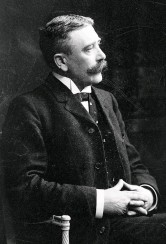Theory within Graphic Design is important as it explains and clarifies and offers sets of ideas which may create articulates opinions and positions.
Theory help to define and explain certain behaviours and relatable information throughout history that helps to define and explain design choices. It is also considered as transferable knowledge.
Helps to define and explain.
Structuralism is a philosophy movement that took place in Europe starting in the late 1800’s and lasting until the 1960’s. Structuralists focused on recurring patterns, on material practices as points for analysis and looked for differences to categorize things and break them up into different sections.
According to the structuralist way of thinking, differential relations are the key to understanding society as a system and that elements must be understood in terms of their relationship to a larger, overarching system. The most known people, which are considered Structuralists are Ferdinand de Saussure, Claude Levi-Strauss and Vladimir Propp. Structuralist ideas can be recognized today in works of graphic designers like Josef Müller Brockmann and Herbert Bayer. The point of this practice was to acquire deeper knowledge and power about culture, society and language thanks to investigation and documentation. With the new perception, the position of the author in that enormous system of communication was questioned. This gave the idea of the designer as an 'author'.
De Saussure (1857-1913) was one of the most significant Swiss linguists and semioticians of the 20th Century. He is considered father of the Structuralist movement and has left remarkable traces in linguistics, literary theory, philosophy and the social sciences. Being a linguist, De Saussure created a so-called two-side model of a sign. In other words, he was convinced that language was made up of signs and that every sign has two meanings. On the one hand, a sign consists out of a signifier, the phonic component of a word and on the other hand, of a signified, the concept, which appears in our mind, when reading the signifier.
Levi-Strauss (1908-2009) is a key character of structuralism and anthropology. His work, influenced by the Swiss linguist Ferdinand de Saussure who I introduced previously, was an immense contribution to the study of kinship systems. Not only did he strive for structure in society, he also wanted to put end to incest. He changed the Western attitude drastically towards community and culture. In fact, he developed a theory through investigations, which argues that culture is a system with underlying reoccurring structures for every society.

Postststructuralists moved from uncovering and investigating the system to looking at where exactly the audience is positioned in this whole web of communication.The movement dominated in philosophy and literary criticism, accrued in France. Post-structuralism is best known in the work of writers like Roland Barthes, Michel Foucault and Jacques Derrida.They emphasized instability of concepts of Structuralism and scrutinized its established theories. The post-structuralist approach states that to understand an object, it is essential to study not only the object itself, but also the systems of knowledge that produced the object.
Katherine McCoy, who talked about how graphic design was influenced by post-structuralism she is a good example of a designer, who took up post-structuralist ideas , or Jenny Holzer, a conceptual artist, who puts expressive taglines into an environment in order to mimic advertisements exaggeration.
Roland Barthes (1915-1980) is a french literary theorist and semiotician was highly interested in the relationship between text and image, but also in old myths. According to the French philosopher, signs are part of complex cultural chains. In his opinion, communication only works if signifier and signified come to one point in the reader’s mind. Therefore, he analysed advertisements, magazine covers and publications in order to detect how visual and linguistic signs work together. By radicalizing structuralist theories, he became one of the founders of post-structuralism."The birth of the reader must be at the cost of the death of the author."
The famous French philosopher and social theorist Michel Foucault is known for his poststructuralist and postmodern way of thinking as he was one of the most important names in the 20th Century. He occupied himself particularly with discursivity and textuality, but also dived into a lot of different sectors. In his transcript 'What is an author?', he encourages to examine the empty space left by the disappearance of the author. Furthermore, he was deeply interested in things that looked perfectly normal from outside and opened them up in his publications."We should reexamine the empty space left by the author's disappearance."

http://newlearningonline.com/literacies/chapter-8/saussure-on-signs
http://combiboilersleeds.com/image.php?pic=/images/claude-levi-strauss/claude-levi-strauss-4.jpg
http://www.qotd.org/search/search.html?aid=347
https://en.wikipedia.org/wiki/Michel_Foucault
Before the end of the 20th Century, our society was a read-only culture as authors and publishers existed as separate entities and creativity was overtaken by the media remix style.Remix refers to creating or recombining already existing material and elements into a new version. The principle of a remix culture is taking samples of other people’s work. Remix culture describes a society that allows and encourages derivative works by combining or editing existing materials to produce a new product.In other words this would be the post modernism era. It’s all about sharing, reusing and borrowing content, which is the benefit of internet and connections all over the world and history. Due to internet access today, technology has enabled users to take over work samples of other people, which is why remix culture can be found everywhere today.However this could be limited stopped by copyright.
Conditional Design
Authorship Interaction
Final Project
Theory
Essay
Home